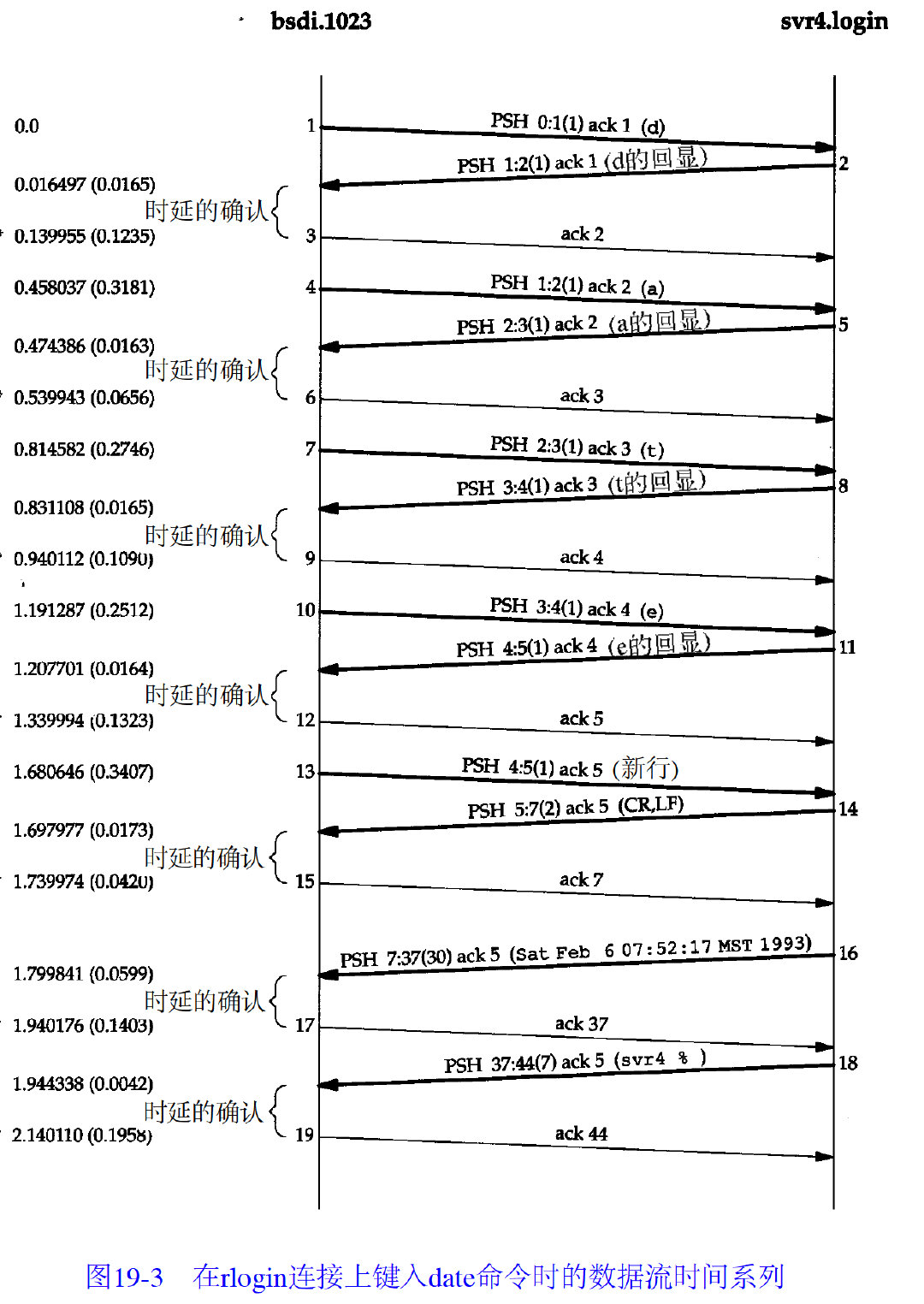ch 19: TCP Interactive Data Flow
TCP

1. Interactive Input
TCP传输的数据有两种,一中是交互式的数据,一种是成块的数据。
从segment的数量来看,交互式的和块式的segment数据包大概各占一半。
从数据大小来说,交互式的大概占10%,块式的大概占90%。
这里先看看交互式的数据。
2. Delayed Acknowledgments
交互式的数据中,IP header加上TCP header基本上就已经40个字节了,而交互式的数据一半都很少,大概10个字节左右,这样数据包就很浪费。
为了减少segment的数量,一般都会将ack推迟一会,等接收到更多的数据的时候再ack。
一般的实现都是将ack推迟200ms。
比如:

3. Nagle Algorithm
如果这种小的segment多的话,可能会对网络造成阻塞,这个时候可以使用Nagle算法。
这个算法要求,一个TCP连接上最多只能有一个未被确认的未完成的segment,在这个segment未被ack之前不能发送其余的segment。
优点:自适应(self-clocking),ack越快,发送数据也就越快。
对ack的理解:
ack仅仅表示TCP已经正确接收了数据;
不代表数据已经被应用层接收;
未被应用层接收的数据放在TCP的缓存中;
未被应用层接收的数据会影响接收窗口的大小;
从接收窗口可以得到有多少数据未被应用层接收。
有的时候需要数据尽快发送,而不需要等待前一个ack,这个时候就需要禁用Nagle算法。
API中可以通过TCP_NODELAY来禁用。
Last updated
Was this helpful?